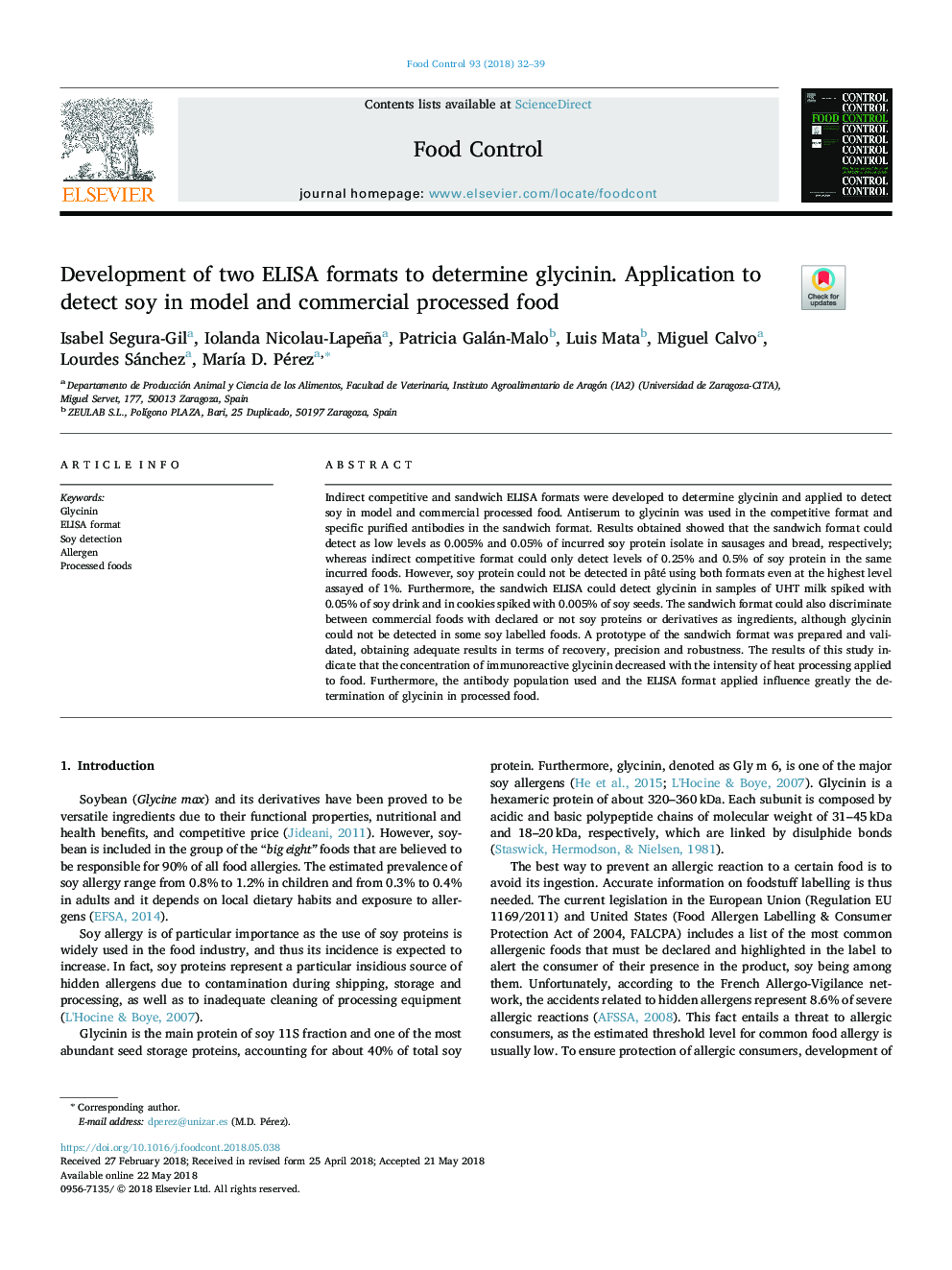| Article ID | Journal | Published Year | Pages | File Type |
|---|---|---|---|---|
| 8887688 | Food Control | 2018 | 8 Pages |
Abstract
Indirect competitive and sandwich ELISA formats were developed to determine glycinin and applied to detect soy in model and commercial processed food. Antiserum to glycinin was used in the competitive format and specific purified antibodies in the sandwich format. Results obtained showed that the sandwich format could detect as low levels as 0.005% and 0.05% of incurred soy protein isolate in sausages and bread, respectively; whereas indirect competitive format could only detect levels of 0.25% and 0.5% of soy protein in the same incurred foods. However, soy protein could not be detected in pâté using both formats even at the highest level assayed of 1%. Furthermore, the sandwich ELISA could detect glycinin in samples of UHT milk spiked with 0.05% of soy drink and in cookies spiked with 0.005% of soy seeds. The sandwich format could also discriminate between commercial foods with declared or not soy proteins or derivatives as ingredients, although glycinin could not be detected in some soy labelled foods. A prototype of the sandwich format was prepared and validated, obtaining adequate results in terms of recovery, precision and robustness. The results of this study indicate that the concentration of immunoreactive glycinin decreased with the intensity of heat processing applied to food. Furthermore, the antibody population used and the ELISA format applied influence greatly the determination of glycinin in processed food.
Keywords
Related Topics
Life Sciences
Agricultural and Biological Sciences
Food Science
Authors
Isabel Segura-Gil, Iolanda Nicolau-Lapeña, Patricia Galán-Malo, Luis Mata, Miguel Calvo, Lourdes Sánchez, MarÃa D. Pérez,
